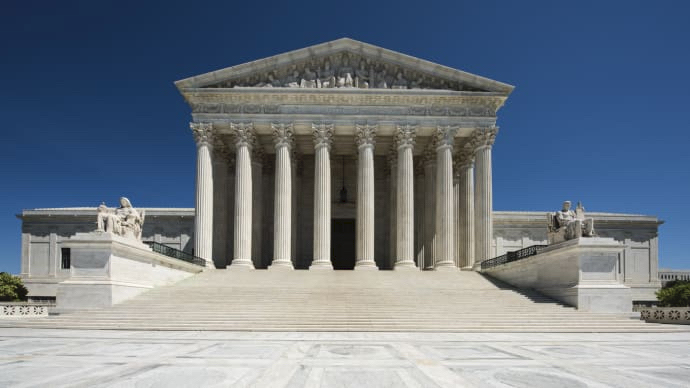By Donna K. Fisher
In a landmark decision, the U.S. Supreme Court expanded workplace protections to include gay and transgender workers. The decision in Bostock v. Clayton County, Georgia resolves an issue that had divided courts and afforded protections dependent upon the state where a person worked.
What the Court Said
In a 6-3 majority opinion, the Court held that Title VII of the Civil Rights Act of 1964’s ban on employment discrimination because of “sex” covers discrimination based on sexual orientation and gender identity. Now, employers with fifteen or more employees are prohibited nationwide from discriminating against gay and transgender employees and applicants for employment.
The Court’s interpretation of “sex” discrimination in Bostock is similar to the Court’s rulings that sexual harassment and motherhood—although not specifically mentioned in the statute—can fall within Title VII’s sweep. The Court concluded that, “discrimination based on homosexuality or transgender status necessarily entails discrimination based on sex” because “to discriminate on these grounds requires an employer to intentionally treat individual employees differently because of their sex.”
What Standard of Proof is Required?
In Bostock, the Court addressed the standard of proof required under Title VII and laid out two ways to find liability for discrimination based on race, color, religion, sex or national origin (called “status discrimination”). Liability can be found using either the “but-for” causation standard or the “motivating” factor standard.
The Court focused on the “but-for” standard, which means that “but-for” an employee’s sexual orientation or gender identity, the employer’s adverse employment action would not have occurred. But, does sexual orientation or gender identity (or other protected categories) have to be “the” but-for cause or just “a” but-for cause? The Court opined that an employee’s sexual orientation or gender identity does not need to be the sole but-for cause for an employer’s decision as long as it is a but-for cause.
The Court noted, however, that Title VII liability for status discrimination could be pursued under the “motivating” factor test. An employee can satisfy the motivating factor test by showing that the employer’s professed lawful reason for an adverse action is a mere pretext for unlawful discrimination. Liability can also be found through “mixed motive” cases where an employer-defendant admits to being motivated partially by an unlawful reason while also claiming it had a legitimate reason and would have taken the same action even in the absence of the unlawful motivating factor—known as the “same action” affirmative defense.
If the employer denies any illegal motive, it puts employees to a higher standard of proof to show unlawful discrimination. Should the employees prevail, however, they are entitled to the full panoply of remedies under Title VII, including back pay, damages, injunctive relief, reinstatement, etc. On the other hand, if the employer relies upon the same action affirmative defense and the employee prevails, the remedies are limited to declaratory relief, injunctive relief, attorneys’ fees and costs.
The protected basis in Bostock was sex, but the holding is equally applicable to cases alleging race, color, religion and national origin discrimination under Title VII.
What are the Practical Implications?
The majority opinion in Bostock punted the question regarding the consequences of its decision. While acknowledging employers’ concerns over the practical implications on sex-segregated restrooms, locker rooms, and dress codes, the Court said it was leaving these issues for future cases. Although the Court left resolution to another day, the Equal Employment Opportunity Commission (EEOC) and the Occupational Safety and Health Administration (OSHA), as well as some state and local governments, have addressed these issues.
With regard to restroom usage, the EEOC and OSHA take the position that employees should be allowed to use the facilities that correspond with their gender identity. The EEOC has ruled that an employer cannot deny transgender employees access to common restrooms; require them to undergo or provide medical proof of surgery to allow the employee access to a restroom that corresponds to the employee’s gender identity; and cannot require a transgender employee to use a single-use restroom instead of the restrooms commonly available to other employees. Additionally, there are state and local ordinances governing restroom usage that must be considered.
As for dress codes, the EEOC’s stance has changed. In the past, the EEOC and many courts had taken the position that sex-specific dress codes did not violate Title VII as long as the dress codes were not arbitrarily enforced and did not favor or affect one sex over the other but were equally burdensome on the sexes. Now, the EEOC takes the position that employees are entitled to dress according to their gender identity. The EEOC brought one of the three lawsuits underlying the Bostock decision representing a transgender female. When the employee—who had previously dressed as a male—announced she was transitioning to a female and would begin wearing women’s clothes, she was fired. Under the Bostock decision, the termination was unlawful because it was based on transgender status.
Because of the Bostock decision, internal complaints, administrative charges, and lawsuits for sex discrimination are likely to increase. Employees who have remained closeted and/or not felt comfortable transitioning may now be more open. As a result, employers must take proactive steps to mitigate the complaints and potential damages.
What Employers Should Do
Employers should consider revising their EEO and non-discrimination/anti-harassment policies to explicitly include sexual orientation and gender identity. Although the Bostock Court uses the terms “homosexual” and “transgender”, the preferable and more modern terminology is “sexual orientation” and “gender identity.”
Training sessions for supervisors and employees should be conducted to ensure everyone is aware of the new law. Discrimination based on sexual orientation and gender identity should be incorporated as a specific topic in all EEO and non-discrimination/anti-harassment training so that employees fully understand what “sex” discrimination means.
Dress codes should be gender neutral and applied consistently. Some dress codes simply advise employees to dress professionally or appropriately for the job. Others may spell out more detail. In doing so, the key is to focus on the clothing or accessories themselves and avoid dictating gender-specific rules. For example, instead of saying, “men may not wear earrings; women may wear one earring in each ear” say “employees may wear one earring in each ear.”
Multi-user restrooms can still be sex-segregated, but employees should be allowed to use the restrooms and other sex-segregated facilities consistent with gender identity, regardless of sex assigned at birth. Transgender employees should not be forced to use single-user restrooms. Single-user restrooms should be gender neutral.
Develop a plan for an employee who is transitioning in consultation with that employee. The plan should cover the employee’s preference for handling communications with other employees and the timing of such communications. Some transgender employees may prefer a gradual transition in which fellow workers are notified of the transition but the employee delays presenting in the new gender role while other employees prefer a quick transition and notification. Discuss any name and pronoun changes with the employee. And, educate the employee’s supervisors and managers on their role in ensuring a smooth transition.

Donna K. Fisher, of Counsel
Ogletree Deakins Memphis
donna.fisher@ogletree.com
www.ogletreedeakins.com
